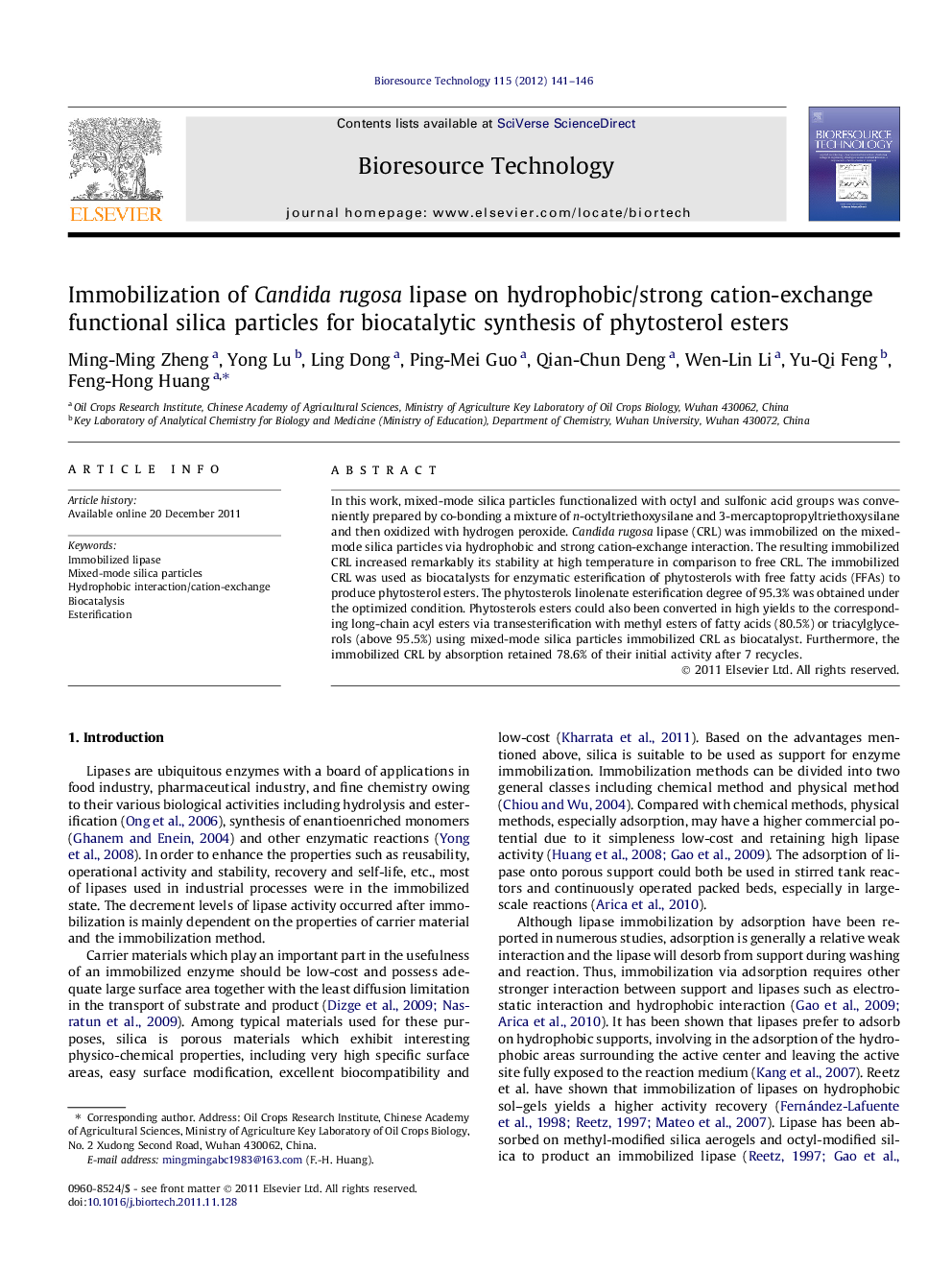| Article ID | Journal | Published Year | Pages | File Type |
|---|---|---|---|---|
| 681563 | Bioresource Technology | 2012 | 6 Pages |
In this work, mixed-mode silica particles functionalized with octyl and sulfonic acid groups was conveniently prepared by co-bonding a mixture of n-octyltriethoxysilane and 3-mercaptopropyltriethoxysilane and then oxidized with hydrogen peroxide. Candida rugosa lipase (CRL) was immobilized on the mixed-mode silica particles via hydrophobic and strong cation-exchange interaction. The resulting immobilized CRL increased remarkably its stability at high temperature in comparison to free CRL. The immobilized CRL was used as biocatalysts for enzymatic esterification of phytosterols with free fatty acids (FFAs) to produce phytosterol esters. The phytosterols linolenate esterification degree of 95.3% was obtained under the optimized condition. Phytosterols esters could also been converted in high yields to the corresponding long-chain acyl esters via transesterification with methyl esters of fatty acids (80.5%) or triacylglycerols (above 95.5%) using mixed-mode silica particles immobilized CRL as biocatalyst. Furthermore, the immobilized CRL by absorption retained 78.6% of their initial activity after 7 recycles.
Graphical abstractFigure optionsDownload full-size imageDownload as PowerPoint slideHighlights► Mixed-mode silica particles functionalized with octyl and sulfonic acid groups were prepared. ► Candida rugosa lipase was immobilized on the silica particles via hydrophobic and strong cation-exchange interaction. ► The immobilized lipase exhibited better thermal stability and reusability. ► Biocatalysis for esterification of phytosterols with different kinds of acyl donor.
